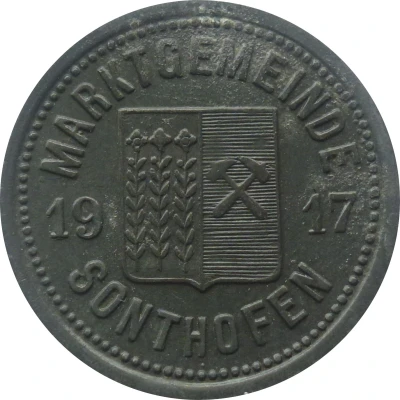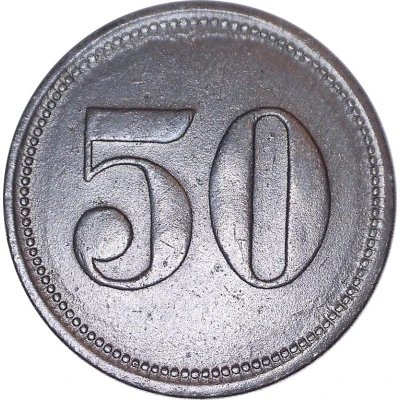


© Willem63 (CC BY-NC-SA)
25 Pfennigs - Sonthofen
1917 year| Zinc | 2.9 g | 22.8 mm |
| Issuer | Market Town of Sonthofen (Federal state of Bavaria) |
|---|---|
| Emperor | William II (Wilhelm II) (1888-1918) |
| Type | Standard circulation coin |
| Year | 1917 |
| Value | 25 Pfennigs (25 Pfennige) (0.25) |
| Currency | Mark (1914-1924) |
| Composition | Zinc |
| Weight | 2.9 g |
| Diameter | 22.8 mm |
| Thickness | 1.3 mm |
| Shape | Round |
| Technique | Milled |
| Orientation | Medal alignment ↑↑ |
| Demonetized | Yes |
| Updated | 2024-10-04 |
| Numista | N#201323 |
|---|---|
| Rarity index | 88% |
Reverse
Pearl rim, denomination centered
Script: Latin
Lettering: 25
Edge
Plain
Comment
Issuing body: [Marktgemeinde, Bayern].Interesting fact
The 25 Pfennigs coin from Sonthofen, Bavaria, 1917, made of zinc, and weighing 2.9 g, is interesting because it was produced during a time of economic turmoil in Germany, known as the "Inflationary Period" (1914-1923). During this time, the value of the German mark (the national currency) dropped significantly, and the government had to print more and more money to keep up with the demand for goods and services. As a result, many coins from this era, including the 25 Pfennigs coin, were made of cheaper materials like zinc, rather than more valuable metals like silver or gold. This coin is a tangible reminder of the economic challenges faced by Germany during this time period.



